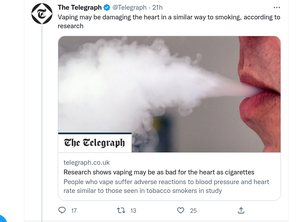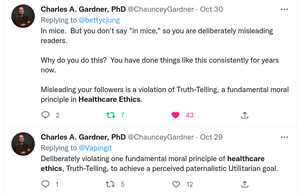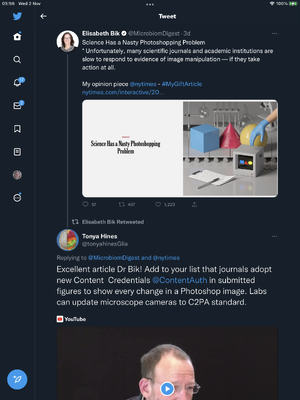Information manipulation: Difference between revisions
Richardpruen (talk | contribs) |
Richardpruen (talk | contribs) |
||
| Line 53: | Line 53: | ||
<br> | <br> | ||
<br> | <br> | ||
---- | ---- | ||
=== Suggestions for additions to this page === | |||
Here you may add links or information from credible sources, examples of problems ‘in the wild’ screenshots etc. for our regular page editors to address, all information must be factual and based on evidence, anything without sufficient evidence will be deleted. | Here you may add links or information from credible sources, examples of problems ‘in the wild’ screenshots etc. for our regular page editors to address, all information must be factual and based on evidence, anything without sufficient evidence will be deleted. | ||
Revision as of 09:53, 2 November 2022
Information Manipulation/Misrepresentation
When THR is reported in the media, manipulation techniques are sometimes employed. The press may, or may not be aware that this is happening, but often the attempt is quite transparent, and the research required to prove it, so trivial, it is hard to argue they are not complicit.
Here are ways to spot this, including the less obvious omissions and questionable use of language.
Creative use of language
(Miss) use of modal verbs

For example the word may is doing all the work here, when we read the article, and the study it reports on, we find that short term changes in heart rate and blood pressure where detected, however nothing harmful or long term. Such things as drinking a cup of coffee, running for a bus, or a surprise gift, all cause similar changes.
Such tactics can be argued to go against principles of 'good ethics' particularly where (public) health is concerned, and where not likely to be obvious, context (as provided above with coffee etc.) should be provided. This is not unreasonable, the public expects high standards, when reading about things that are used to make health choices. Please see the next picture particularly the second tweet pictured, regarding the reasons for being untruthful, and why that isn't ok.
Omitting important information

Many media reports, and even press releases seem to use the tactic pictured in the image, failing to mention that the results are from a study in mice.
Clearly the public should not be confused in this way, particularly if no evidence has been found for these results to reflect what happens in humans. Omission of information that is required to make an informed decision, particularly if the public can't reasonably expected to deduce or know, is a violation of ethics.
Dr Gardner Has a PHD in developmental neurobiology, and has taught healthcare ethics.
Image manipulation

New York Times article By Elisabeth Bik
Dr. Bik is a microbiologist who has worked at Stanford University and for the Dutch National Institute for Health. She works to find and bring to attention such issues, please see the article for details.
She is also active on Twitter
Suggestions for additions to this page
Here you may add links or information from credible sources, examples of problems ‘in the wild’ screenshots etc. for our regular page editors to address, all information must be factual and based on evidence, anything without sufficient evidence will be deleted.
Instructions for editors of this page
Warning: Contentious subject, please would Page Authors take care to remain factual and include evidence/examples.
External links
https://scienceintegritydigest.com/about/ Science integrity direct focuses on image manipulation in scientific papers.